History
The Beginning
In the end, Grant Cullimore’s life story celebrated the start of Davis Park Golf Course.
The need for the first public golf course to be built between Ogden and Salt Lake City may appear obvious, more than 60 years later. Yet the concept of Davis County developing such a facility was viewed as “a big mistake” by many residents.
Cullimore’s family shared that account by way of a lasting tribute when the county’s first full-time recreation director died in 2012, not quite a half-century after the opening of one of Utah’s most popular courses. The venue originally called Memorial Park, built on property the Davis County Clipper labeled “rich farmland” and “one of the (county’s) most breathtaking scenes,” quickly took hold.

Davis Park GC in Fruit Heights propelled some Utah Golf Hall of Fame careers, boosted Davis High School’s golf dynasty and became successful enough to persuade county officials to build Valley View Golf Course, a few miles north along U.S. 89 in Layton.
Brad Stone, who retired in 2020 as the second of the course’s three Head Professionals, captured the facility’s distinction. “One of the charms of Davis Park is it’s a community golf course,” Stone said. “People identify with it, they take ownership and it’s their place.”
That’s reflected in men’s, women’s and senior associations that total several hundred members, as well as regular players who once accounted for 100,000-plus nine-hole rounds annually in the sweet spot of the late 20th-century golf boom, predating the building of other courses in Davis County.
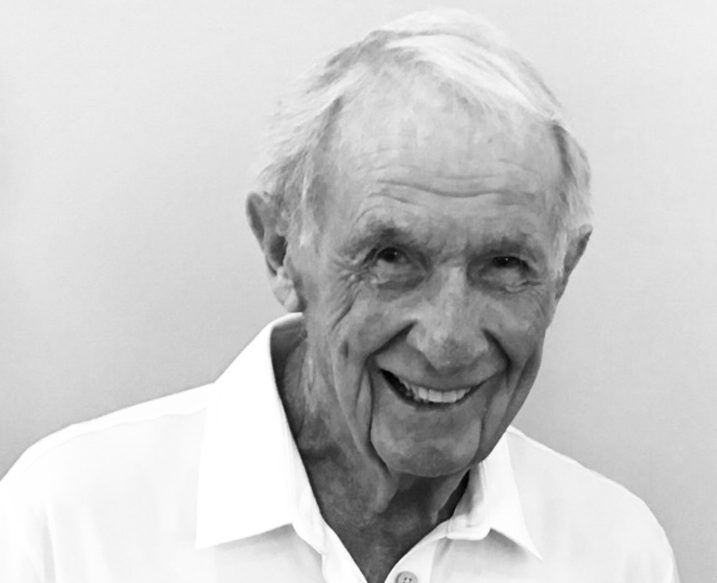
Pierre Hualde
Davis Park has reestablished its aura recently, having recovered from an epic 2011 windstorm that took down nearly 500 trees and altered the historic look of the course. The venue is a tribute to Cullimore and county administrators who took his advice. And the Pierre Hualde Memorial Bridge in front of the No. 18 tee honors a PGA Professional who devoted the bulk of his 92 years to Davis Park, even working alongside Stone (his son-in-law) right up until his passing in February 2020.
“This was Pierre’s life,” said current Head Professional Zach Johnson. “I know how much Pierre loved and valued this place. Obviously, that was passed down to (Stone). There’s self-induced pressure to make sure you hold up what their expectations were.”
Having served as an assistant pro at Oakridge Country Club in nearby Farmington, Hualde was hired in April 1963 to help oversee the seeding of Davis Park’s first nine holes. The original timetable of a late-summer opening was altered when “spring rains and runoff water washed out much of the new grass planted on the fairways,” The Salt Lake Tribune reported.
The grand opening was delayed until May 29, 1964. “We’ve had a lot of good help getting it ready and a lot of golfers pushing us to get it done,” County Commission Chair Wayne Winegar told the Clipper.
The $1 green fee for nine holes was appealing; so was a walkable layout designed by Ernie Schneiter Sr., a charter member of the Utah Golf Hall of Fame. William Henrichsen Neff drew the second nine (the current front nine) in 1968; he also has been inducted into the Hall. So have Scott Whittaker, one of Hualde’s first hires as a teenage pro shop employee, and Bob Betley, who liked to play nine holes before starting his shift as an Ogden policeman.
Several other Davis Park figures are potential Utah Golf Hall of Fame candidates, including United States Golf Association champion Clay Ogden and brothers Daniel and Boyd Summerhays, who started his distinguished teaching career on the Davis Park driving range, teaching the likes of PGA Tour stars Viktor Hovland and Tony Finau.
Like thousands of rank-and-file golfers, they’ve enjoyed a course that The Tribune’s Jack Schroeder labeled “short and sporty and with undulating fairways and tricky greens” when it opened and Stone still considers “fun to play every day.”
Even in a state that’s known for public golf, Davis Park filled a big void. In 1967, the Clipper summarized the diverse clientele: “A good cross-section of the community play the course, ranging from farmers, mechanics, heavy-duty equipment operators and carpenters to teachers, salesmen and women.”
Hualde added, “This is no longer a game for a specific income bracket or age group.”
A year later, Hualde told The Tribune, “We made believers out of the doubters. They know now that golf is a big sport here.”
Davis Park’s long-lasting impact certainly validates Cullimore’s legacy, on top of his work as a Davis High teacher and coach.
Dustin Volk, Davis County’s director of golf and a former Davis Park assistant pro, is proud to be part of that legacy. “Sixty years later, we’re still going strong and are still of value to the community,” Volk said.
Fond memories for the Summerhayses
One of the greatest partnerships in Utah golf history began on the Davis Park Golf Course driving range.
As a former PGA Tour player, Davis High School graduate Boyd Summerhays was just beginning his teaching career. Salt Lake City native Tony Finau finally was gaining some footing in pro golf, playing the Korn Ferry Tour in 2014. Finau reached out to Summerhays about working on his golf swing. Positive results came almost instantly, and the long-term effect is ongoing.
Finau is maximizing his potential as a five-time PGA Tour winner (as of early 2023) and Summerhays is established as one of the game’s top teachers, in addition to coaching his children, Preston, Grace and Cameron. Summerhays is thankful to former Davis Park Head Professional Brad Stone for helping him get started in his new career.
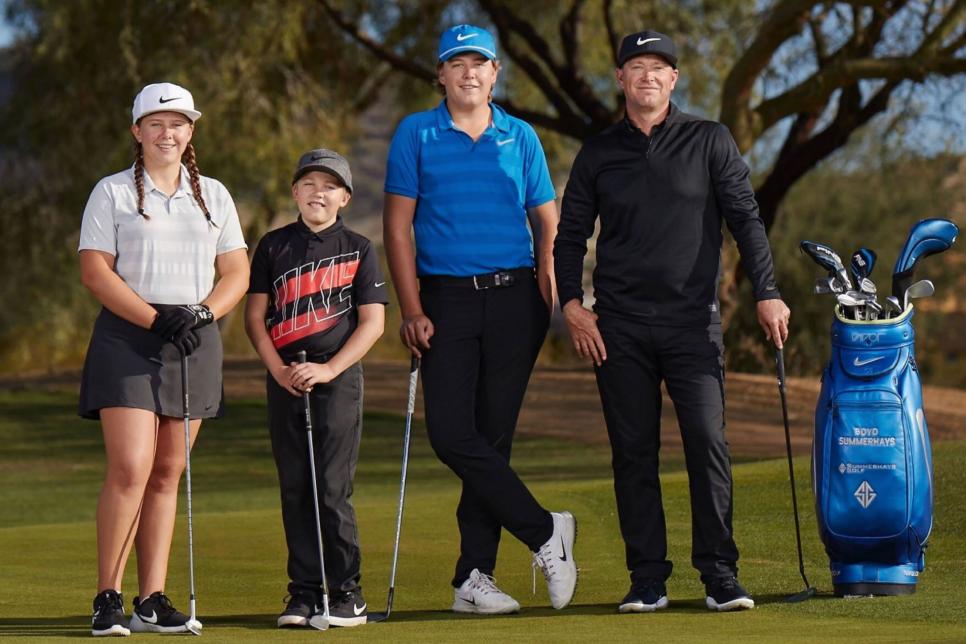
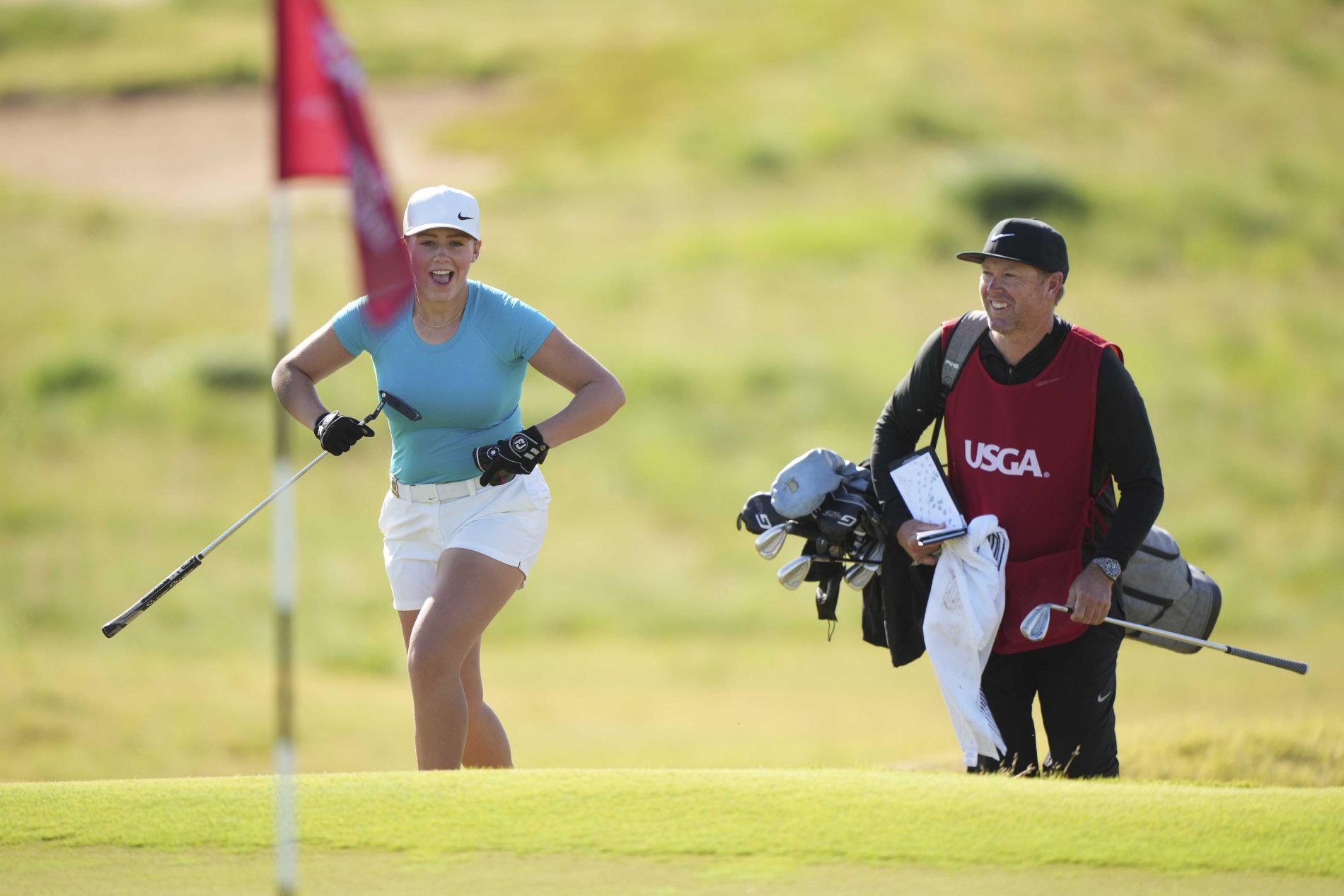
“Brad Stone gave me my first chance at Davis (in 2012), always wanting me to do well,” Summerhays said. “I always took a ton of pride, teaching out there. I definitely wouldn’t be here without Davis Park. I definitely learned how to teach and help people get better.”
He also appreciates how Preston and Grace, Utah State Amateur champions and current Arizona State golfers, spent “sunup to sundown” at Davis Park in their childhood summers and “learned all the shots they needed. They told their father how much they liked the “nostalgic” feel of the course. “I didn’t even know they knew that word,” Summerhays said.
Summerhays shows his appreciation by continuing to stage his family’s annual charity golf tournament at Davis Park.
Summerhays advanced through regional qualifying at Davis Park in 1992 at age 12, qualifying for his first State Amateur appearance. He treasures such childhood memories, as well as “just the relationships that last a lifetime,” he said.
His younger brother, Daniel, also was a Davis High star who thrived on the Darts’ home course on his way to the PGA Tour.
“When I think of Davis Park, I think of pure greens and my favorite practice green in the state,” Daniel said. “I have spent so many hours on that putting green.”
Oakridge Country Club is the Summerhays family’s course of origin, but Davis Park “feels like another home course,” Daniel said. He credits Stone, current Head Pro Zach Johnson and the superintendents for making it “one of the premier public courses in the state.”
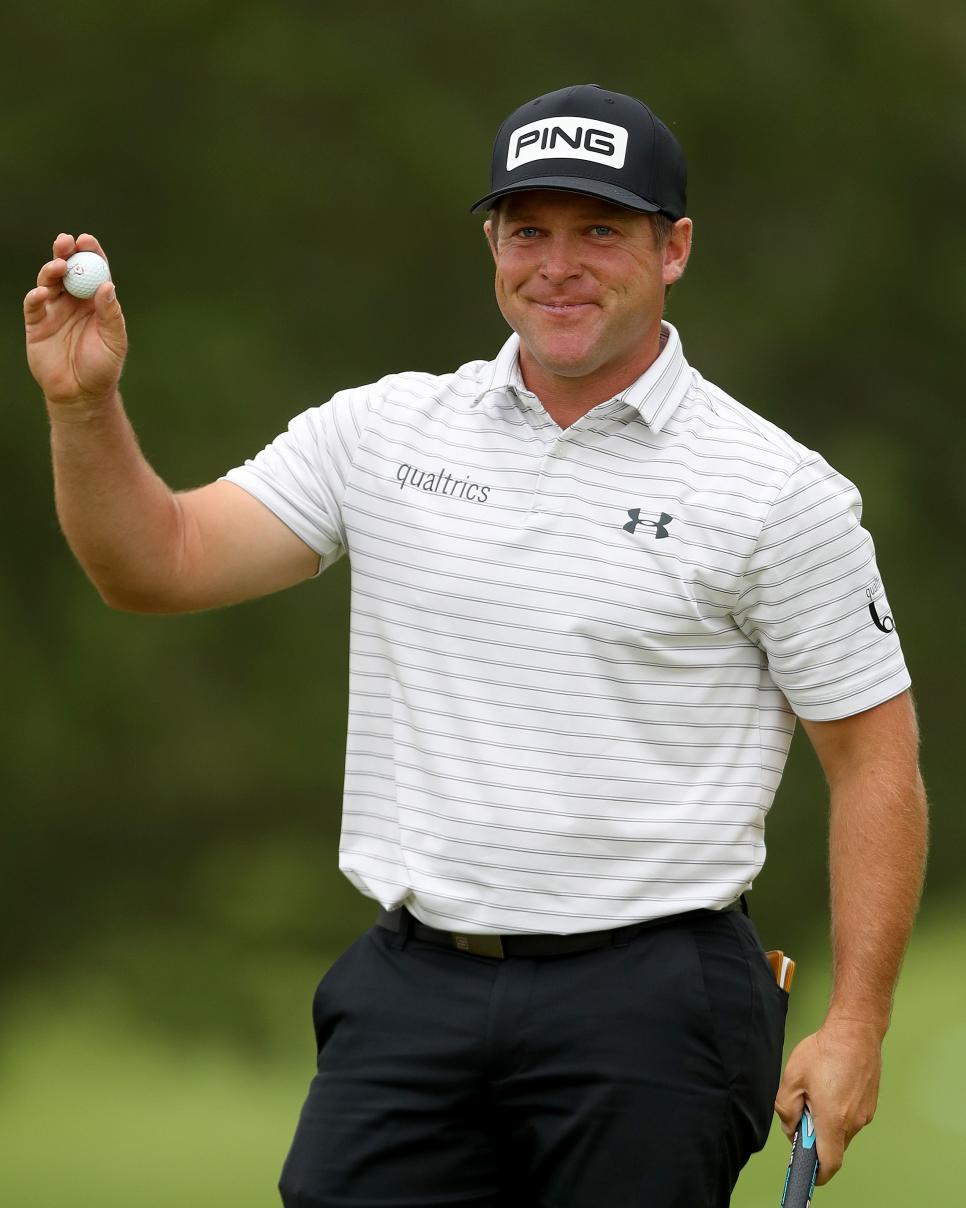
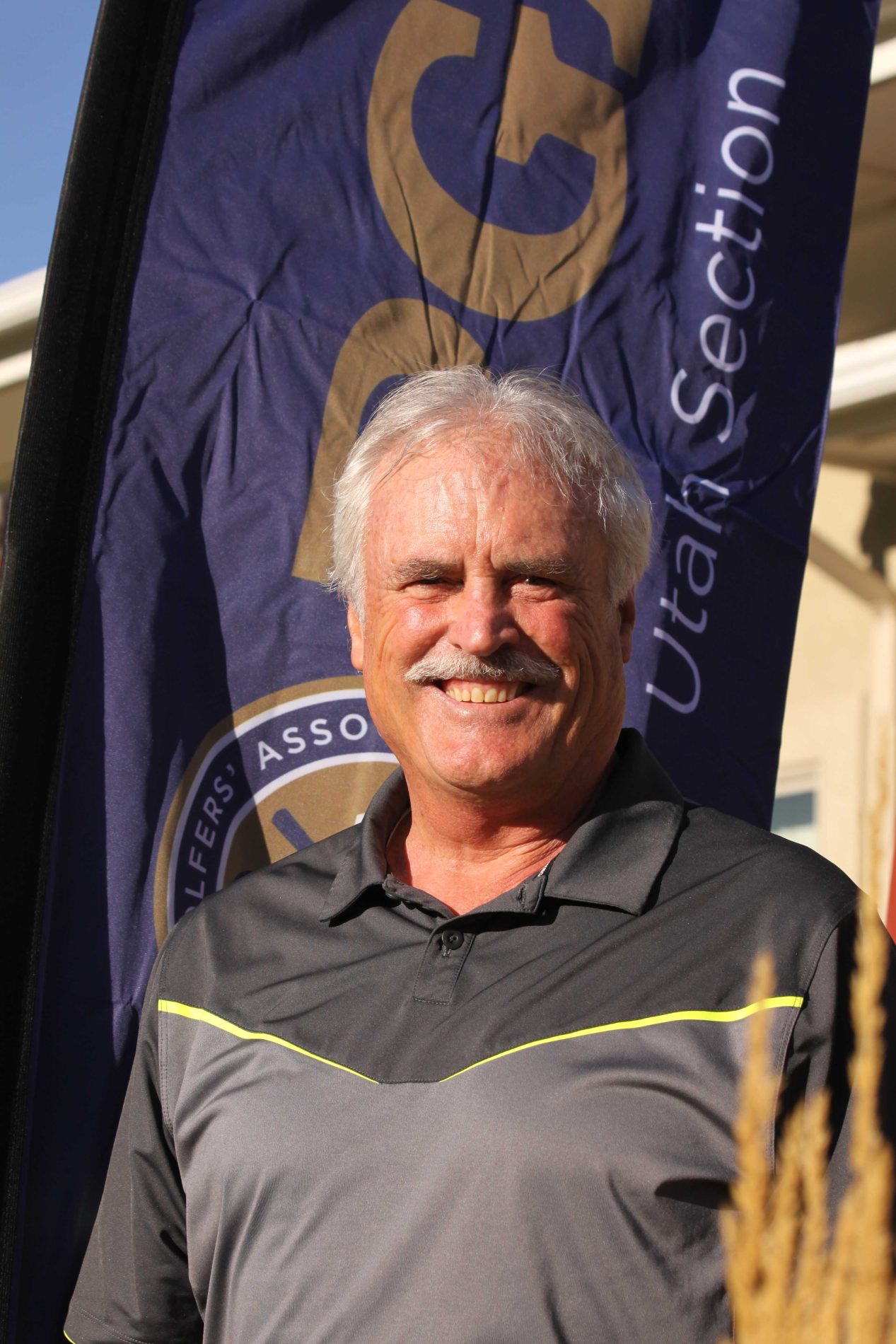
Scott Whittaker
Home of great high school golf tradition
Davis High School seemingly always has fielded strong golf teams, but that wouldn’t have happened without
a public golf course being built about a mile from the campus.
Scott Whittaker (DHS Class of 1967), a longtime PGA Professional and former executive director of the
Utah Section PGA, played for the Darts’ first golf team, a couple of years after Davis Park GC opened.
Whittaker is the only Davis graduate in the Utah Golf Hall of Fame, but the school’s strong golf tradition
dictates that others are likely to follow.
The Darts have won seven boys state championships, between 1993 and 2017, and four girls titles, starting in 2009, the year after girls golf became sanctioned in Utah. Davis also claims seven individual medalists in boys state tournaments, including Boyd Summerhays’ consecutive titles in 1995-96 and Clay Ogden’s pair of wins in 2000-01, and two girls victories.
Daniel Summerhays, Boyd’s brother, joined Ogden in anchoring the Darts’ run of four team titles in 1999-2002 under coach Val Cullimore.
The Summerhays brothers spent much of their childhood at Oakridge Country Club, they;re also proud of their Davis Park ties. Ogden is a true son of Davis Park, spending long summer days on the practice green and in the adjacent pitching/chipping area, developing the game that took him to the 2005 U.S. Amateur Public Links title and two victories in the Siegfried & Jensen Utah Open, following his BYU golf career.
Mike Jacks was the medalist at Valley View GC in 1993 when the Darts took their first team championship and Cole Ponich led the Darts to their most recent state title as the medalist at Valley View in 2017, shooting 65-68.
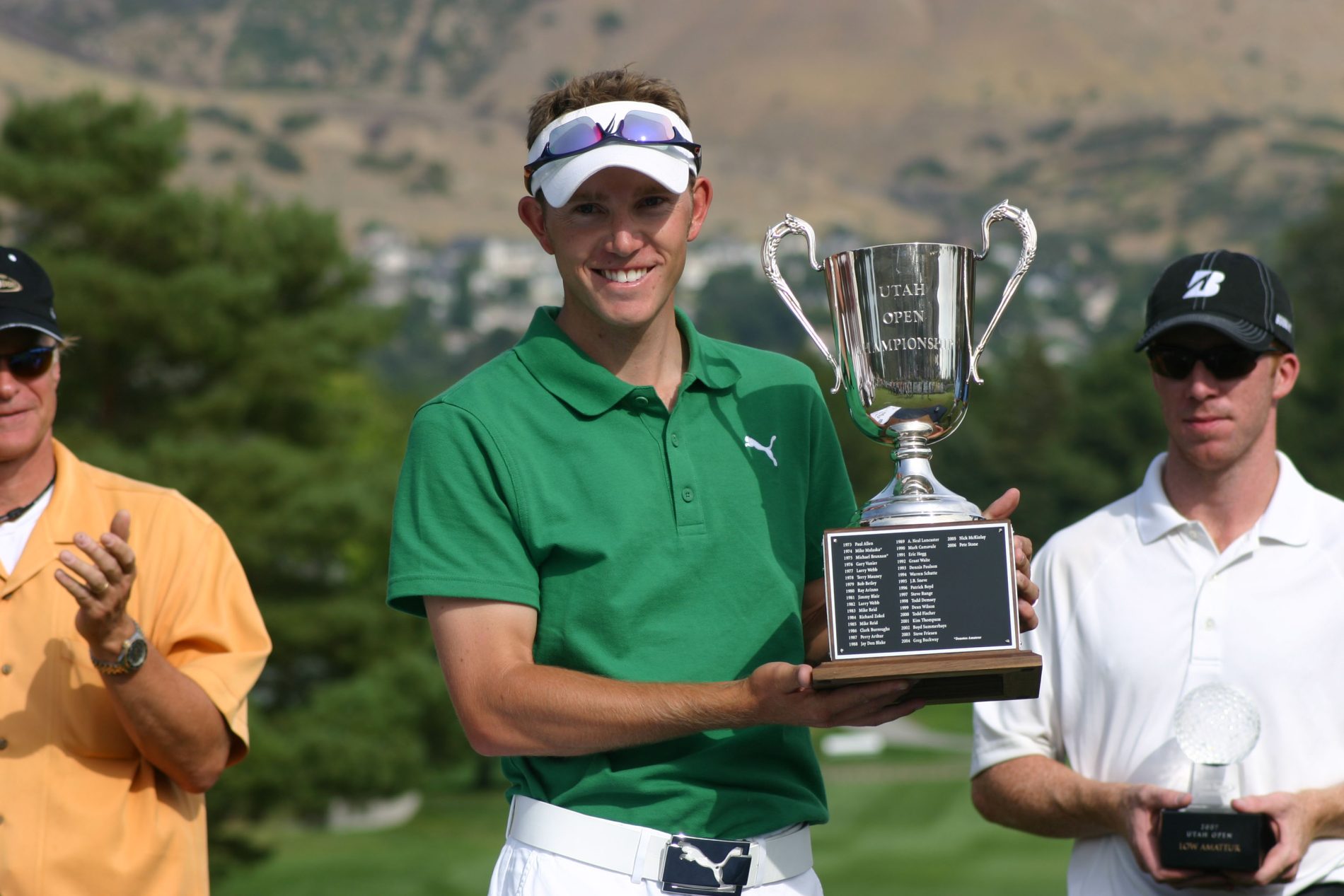
Clay Ogden
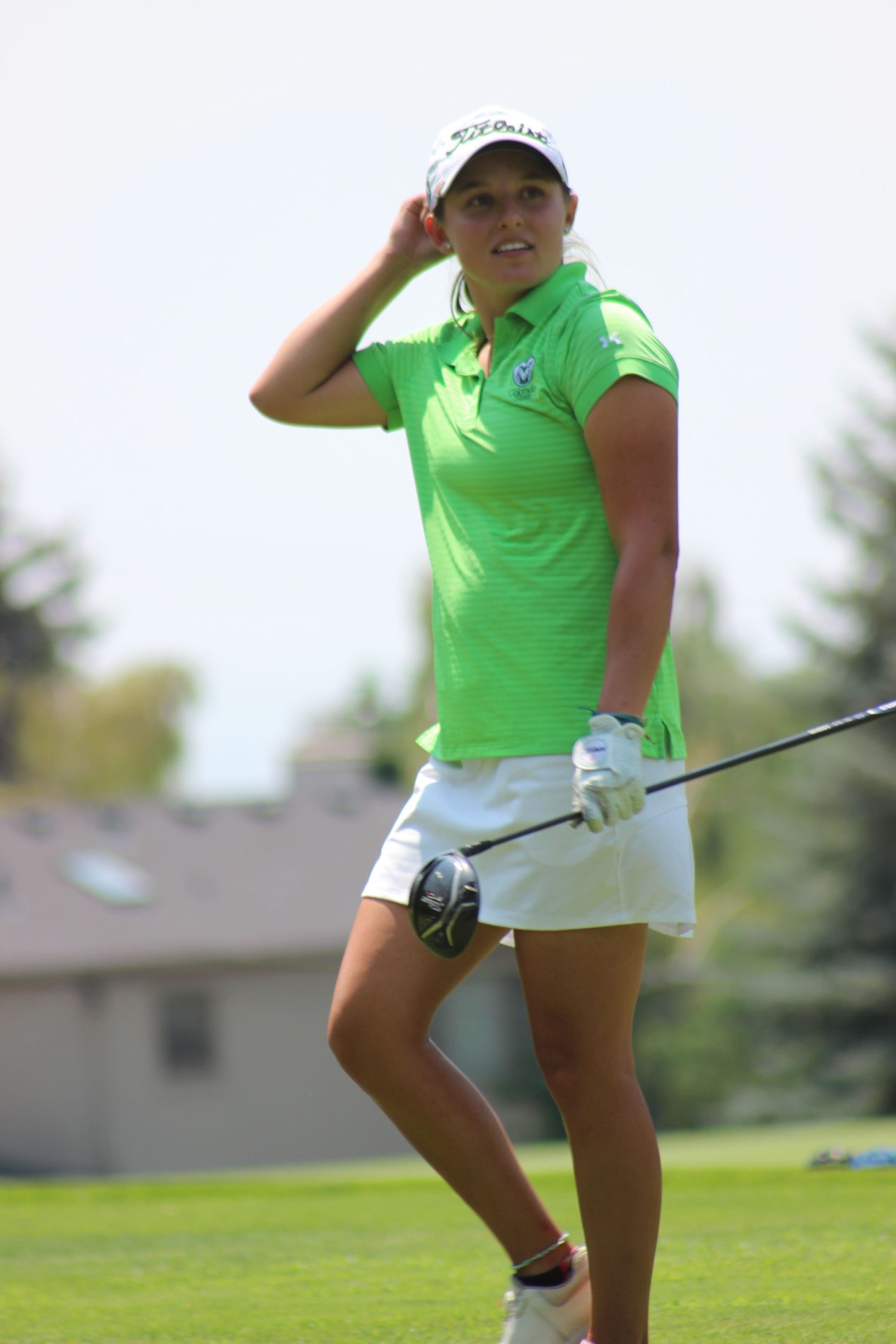
Jessica Sloot
In girls golf, Jessica Sloot was the medalist in 2015 as the Darts took a team title and Laura Gerner
followed as the individual winner in 2016. Cheyenne Hansen led the Darts to the 2021 team
championship.
Davis Park also has served as a frequent host of high school state tournaments. Pete Stone, who grew
up around the course as a son of longtime Head Professional Brad Stone, was the Class 3A medalist for
Judge Memorial as a sophomore in 1997, winning the first of his three straight titles with a 70 at Davis
Park. Jordan alumnus Steve Schneiter, a Utah Golf Hall of Fame member, posted a 72 to take a
1981 title. Other medalists at Davis Park include Jordan’s Jeff Snow (1976), Brighton’s Craig Wiles
(1980), Timpview’s Bill Madsen (1980), Granger’s Darren Dever (1981), Timpview’s Will Huish (1990) and
Lone Peak’s Kihei Akina (2021).
Tooele’s Sadie Palmer won the combined 4A/5A title at Davis Park in 2008 in the first girls state
tournament and Dixie’s Nicole Thomas was a medalist in 2010.

Former Davis Park GC Head PGA Professional Brad Stone discusses the fallen trees following the windstorm of 2011.
Photo courtesy of Deseret News.
Davis Park: The Windstorm of 2011
The wind blowing in Davis County is an ordinary occurrence, but as Head Professional Brad Stone arrived at work on a December morning at Davis Park Golf Course in 2011, he braced himself for an extreme event.
“Driving up, I kind of sensed this one was going to be different,” Stone said.
Forty-foot pine trees were “just skidding along,” Stone recalled, and a new shed on the driving range was demolished. The winds exceeding 100 mph uprooted “a massive amount of trees,” numbering close to 500, including some that were so damaged that they had to be removed.
Zach Johnson, then an assistant pro, was the first staff member to arrive at the golf shop that morning. “It was a mess,” he said. “I was choked up. When you see destruction like that, it’s hard to fast-forward and see what it’s going to look like when it’s cleaned up.”
As Stone told KSL-TV that week, the damage really hit home because he had plotted the locations of many of the trees in his early years as an assistant pro. “In that aspect, you see 20 or 25 years of growth go down in a couple-hour period. And to watch it, it’s disheartening,” Stone said.
John Petroff, then a Davis County commissioner, toured the course with Stone and told KSL-TV, “Although these trees were beautiful and they looked so nice, apparently it’s not the right place for a pine tree because it doesn’t have that root system that we needed.”
Looking back, Stone recalled, “It was few years before we got things put back together. “It’s sad to see something like that.”
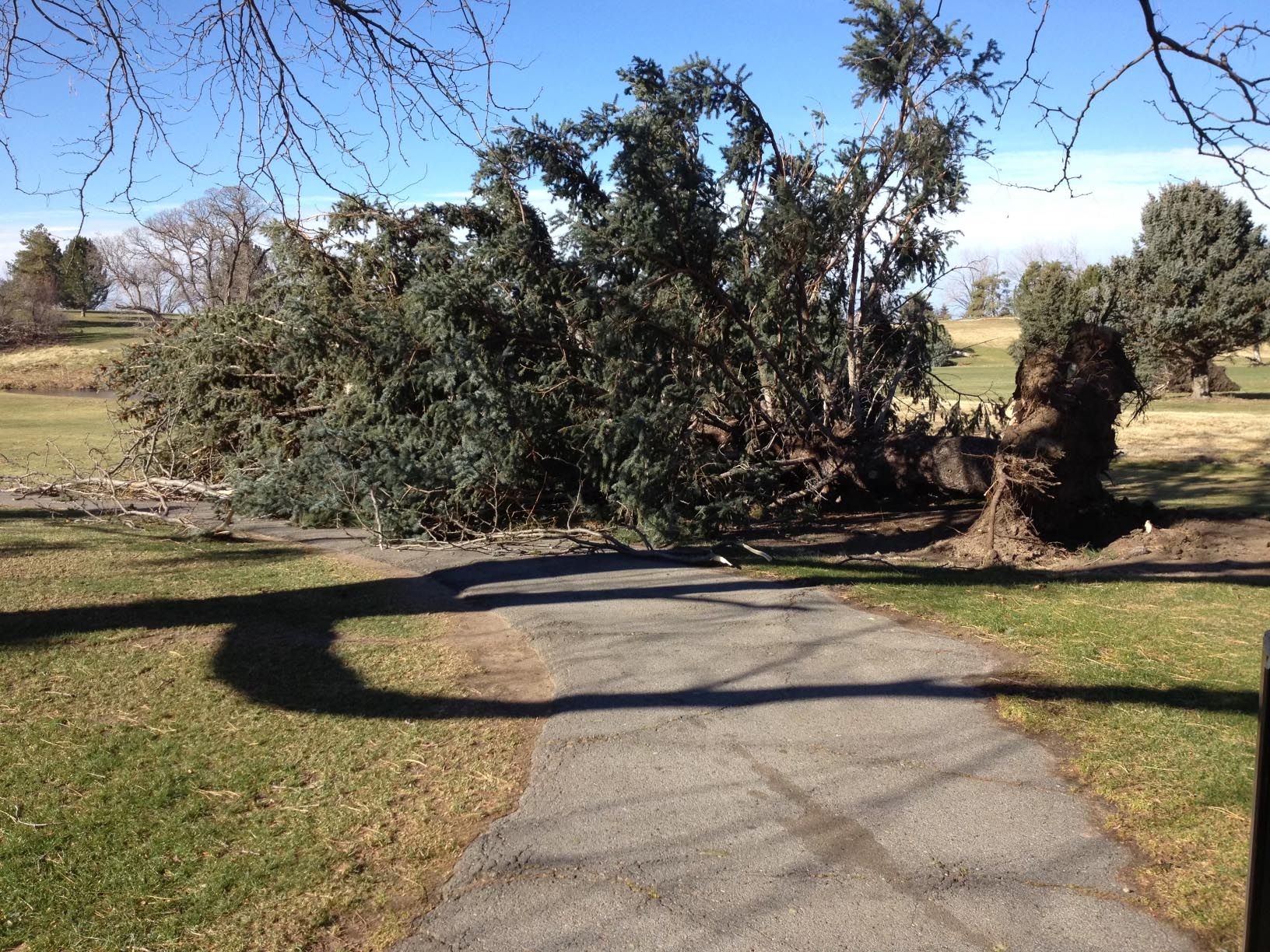
Photo courtesy of Pete Stone.

Photo courtesy of Pete Stone.
The cleanup became a huge project for superintendent Tyler Wardle and his staff, using drum chippers to condense all of that wood, as well as developing a plan for replacing some trees. Wardle considers the losses somewhat of “a blessing in disguise … we were already in the process of removing some trees,” he said. But “we lost quite a few that we didn’t want to lose.”
The most noticeable losses came on the two front-nine par-5 holes, Nos. 3 and 8.
“To think of where we are now … it doesn’t seem like there’s a void,” said Johnson, who’s now the Head Professional. But “it definitely changed a few holes.”
